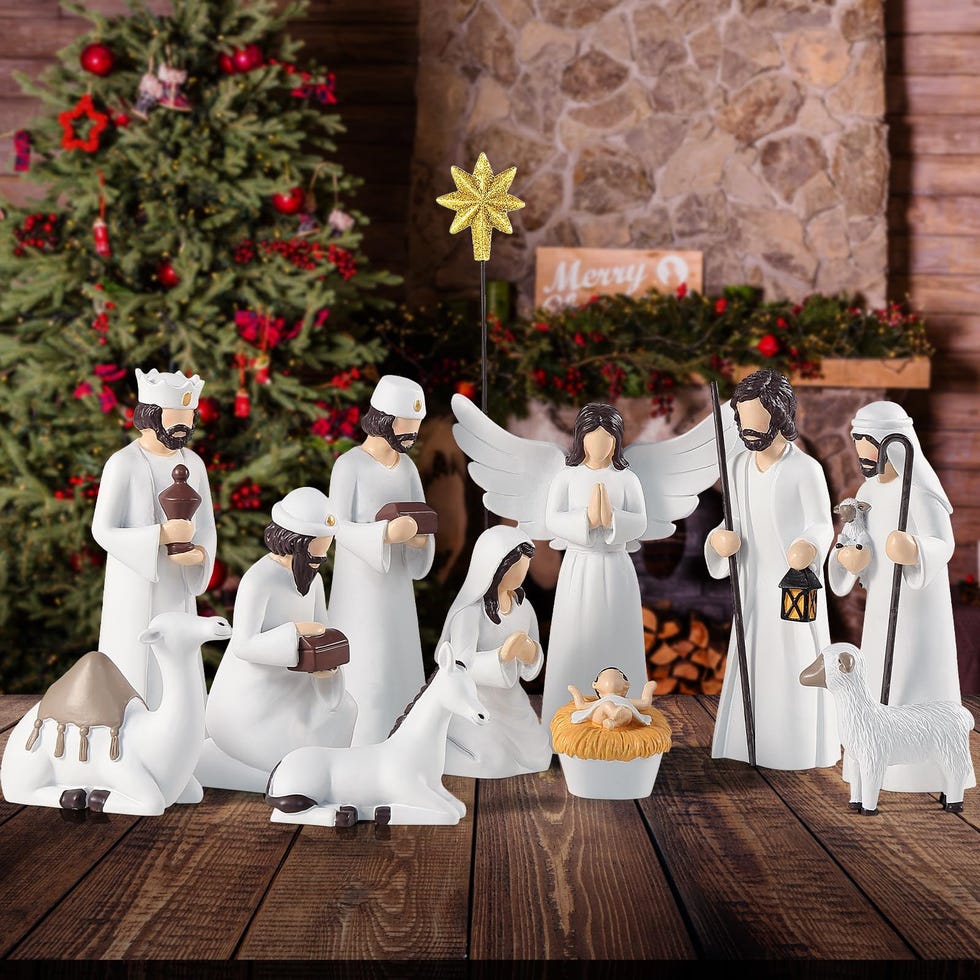The Jerusalem Art Museum is renowned worldwide for its exceptional collection of art that spans centuries and cultures. Among its treasures, the museum’s Nativity sets stand out as both artistic marvels and cultural artifacts. These sets capture the timeless story of the birth of Christ while reflecting the diverse artistic traditions of different regions. Whether crafted in delicate porcelain, carved from wood, or fashioned from metals, each nativity set at the museum tells a story of devotion, craftsmanship, and cultural heritage.
The History and Significance of Nativity Sets
Origins of Nativity Sets
The tradition of nativity sets dates back to the early 13th century when St. Francis of Assisi created the first living nativity scene in Italy. The practice quickly spread across Europe, evolving from simple live enactments to intricate miniature displays. Over time, nativity sets became an essential part of Christian celebrations, symbolizing not just the birth of Jesus but also the values of humility, peace, and family.
Cultural and Artistic Value
Nativity sets are more than holiday decorations—they are works of art that reflect the culture, materials, and artistic sensibilities of their creators. From hand-carved olive wood from Bethlehem to delicate Italian porcelain figures, each set embodies centuries of craftsmanship. The Jerusalem Art Museum’s collection showcases this diversity, offering visitors a unique opportunity to explore the global artistic interpretation of a singular sacred event.
Highlights of the Jerusalem Art Museum’s Nativity Sets Collection
Hand-Carved Wooden Nativity Sets
Among the museum’s most admired displays are the hand-carved wooden nativity sets. These works often feature intricate details, from the expressions of the figures to the texture of the clothing and animals. Carved primarily from local woods, these sets highlight the skill of artisans who have preserved traditional techniques over generations.
Porcelain and Ceramic Nativity Sets
The museum also houses an exquisite selection of porcelain and ceramic nativity sets, characterized by their delicate features and vibrant colors. Many of these sets originate from Europe, reflecting centuries-old artistic traditions. The use of porcelain allows for intricate detailing, capturing even the most subtle nuances of the figures’ faces and postures.
International Nativity Sets
Visitors are often captivated by the museum’s international nativity sets, which display unique cultural interpretations of the nativity story. For example, Latin American sets may feature vibrant textiles and local fauna, while African sets incorporate symbolic patterns and materials indigenous to the region. These displays emphasize the universality of the nativity story and its adaptation across cultures.
Craftsmanship and Materials in Nativity Sets
Wood and Stone Carvings
Many of the museum’s nativity sets are meticulously carved from wood and stone, materials that allow artisans to express depth and realism. Wooden sets are often polished and painted, while stone sets may include natural pigments or gilded accents. These materials lend a sense of permanence and reverence to the figures, making each set a true masterpiece.
Porcelain, Glass, and Metal
Porcelain, glass, and metal are favored for their ability to hold intricate details and vibrant finishes. The Jerusalem Art Museum showcases nativity sets in all these mediums, highlighting the ingenuity of artists who balance beauty with durability. Glass sets, for instance, may feature delicate etched details, while metal sets often include intricate filigree and hand-painted embellishments.
Seasonal Exhibitions and Visitor Experience
Annual Christmas Exhibitions
Every year, the Jerusalem Art Museum hosts special exhibitions featuring its finest nativity sets. These exhibitions allow visitors to experience the story of Christ’s birth through art, with lighting and display arrangements designed to enhance the visual impact of each set. Seasonal exhibitions also often include guided tours, providing in-depth information about the history, craftsmanship, and cultural significance of the pieces.
Interactive and Educational Programs
The museum offers educational programs for visitors of all ages, including workshops on creating traditional nativity sets. These programs emphasize hands-on learning, encouraging participants to explore different materials and techniques while gaining a deeper appreciation for the cultural and spiritual significance of the nativity.
Preserving Tradition in a Modern World
Conservation Efforts
The Jerusalem Art Museum places great emphasis on the conservation of its nativity sets, ensuring that future generations can enjoy these treasures. Specialists monitor environmental conditions, perform restoration when necessary, and use archival materials to protect fragile pieces. These efforts are crucial in preserving not just the physical artifacts but also the rich traditions they represent.
Encouraging Contemporary Interpretations
In addition to preserving historical sets, the museum also encourages contemporary artists to create modern interpretations of nativity sets. This approach bridges tradition and innovation, showing how the nativity story continues to inspire creativity today. Contemporary sets may incorporate unconventional materials, abstract designs, or cultural symbolism, reflecting a dynamic evolution of the art form.
Why Visit the Jerusalem Art Museum for Nativity Sets?
Visiting the Jerusalem Art Museum offers a rare opportunity to see nativity sets that are both historically significant and artistically breathtaking. The museum’s curated collections provide insight into centuries of religious devotion, artistic skill, and cultural exchange. For art lovers, history enthusiasts, and families alike, the nativity sets are more than exhibits—they are storytelling masterpieces that bring the spirit of Christmas to life in an educational and inspiring setting.
Conclusion
The Jerusalem Art Museum’s nativity sets collection is a testament to the enduring power of art, faith, and cultural expression. Each set, whether hand-carved, sculpted from porcelain, or crafted from metal, offers a glimpse into the rich heritage of nativity artistry from around the world. By visiting the museum, you can experience the intricate beauty, historical significance, and spiritual depth of these exquisite displays. Don’t miss the chance to explore these treasures—immerse yourself in the artistry and tradition that make the Jerusalem Art Museum a beacon of cultural preservation and creative excellence.



